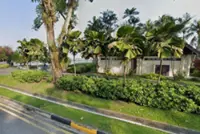Datuk Dr Annabel Teh Gallop won the Merdeka Award 2022 for “Outstanding Contribution to the People of Malaysia”. She was recognised for her outstanding contribution in scholarly research, curation, archiving and preservation of ancient Malay letters and manuscripts, Malay seals and documents. – Photos: DATUK DR ANNABEL TEH GALLOP
Datuk Dr Annabel Teh Gallop won the Merdeka Award 2022 for “Outstanding Contribution to the People of Malaysia”.
The 61-year-old was recognised for her outstanding contribution in scholarly research, curation, archiving and preservation of ancient Malay letters and manuscripts, Malay seals and documents, which has led to the understanding of the Malay language as the language of trade and diplomacy throughout the Malay Archipelago, and the illumination of the rich heritage of the Malay world.
Already a subscriber? Log in
Save 30% OFF The Star Digital Access
Cancel anytime. Ad-free. Unlimited access with perks.





